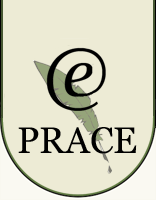
Institutions in a model colony
Governor
At the head of the colonial administration in Ghana, as in other British colonial territories, was the governor appointed by the British Crown and answerable to the metropolitan government through the Secretary of State for the Colonies (MacCarthy 1983:87). The governor administered the territory on the advice of two important arms of government, the executive council and the legislative council. The evolution of these two bodies was set out in constitution.
Local administration
Throughout the colonial days, there were two types of local government (Salm 2002:21-22). The first to be developed were town councils, which were followed by what was called native administration. A characteristic feature of the two types of local government was that while the traditional rulers or the chiefs played the leading role in the native authorities, which the various ordinances created, the people’s own representatives together with some ex-government officers managed the affairs of the town or municipal councils.
Town Councils
As early as 1858, an ordinance was promulgated setting up councils in Cape Coast, then headquarters of the British on the coast, and James Town, Accra. In 1894, the government enacted the Town Council Ordinance, creating municipal councils not only for Cape Coast and Accra as before, but also for Sekondi. Their main functions included wildlife conservation and public health. While Accra and Sekondi town councils started to operate, the ordinance remained a dead letter in Cape Coast (Salm 2002:22).
One objectionable aspect about membership in the town councils for many years was that not only did the nominated members of these councils form half of the total membership, but the presidents of the council were also the white district commissioners of the area concerned (Gann 1972:43). An ordinance introduced by Governor Gugginsberg in 1924 reducing the nominated membership from half to one-third and granting more autonomy to the councils had to be withdrawn in the face of strong protest against the stringent voter’s qualification and the imposition of up to 20 percent rates.
Indirect rule and native authority
Before colonialism took firm roots in the country, the indigenous ruler occupied a unique position in his kingdom; he was accepted by his subjects as a religious, political and judicial head of the realm, the spirit and embodiment of the nation, and the custodian of the people’s ancestral cultural heritage (Gocking 2005:37).
The British colonial system did not do away with the traditional role of kings, but made them the central figures in local administration. Considering these rulers as the body, which represented the public views and wishes, the colonial system granted the “commoners” practically no place in the relationship between the indigenes and the colonial government or in the administration at the local level. This policy was backed by what was known in the colonial system as “indirect rule”, first introduced by Lord Lugard in Uganda, and then in Nigeria from 1914. In Ghana, indirect rule was introduced fully under Sir Frederick Gordon Guggisberg (Daaku 1970:19-20).
The system of indirect rule in the country worked as follows. Within a traditional state, or a group of smaller states, the paramount chief, their leading sub-chiefs and important counselors were into a Native Administration, later named a Native Authority, presided over by a paramount chief. The powers and functions of the Native Authority covered matters relating to traditional and customary institutions and practices. These authorities operated under the general direction and control of the colonial district commissioner (ibid 1970:20).
An important feature of all these ordinances was that the chiefs were granted powers of controlling the local tribunal, with limited jurisdiction relating to customary and testamentary matters, and to make by-laws which did not run counter to the British concept of law (ibid 1970:21). In 1927, Governor Gugginsberg promulgated the Native Administration Ordinance. Among other things, the new ordinance set out the process of the election and disposal of chiefs and the hierarchy of traditional rulers in the colony (Kimbley 1963:461).
The 1927 Ordinance also established the Joint-Provincial Council comprising elected representatives of the three provincial councils created in 1925 for southern Ghana, which met at Dodowa. In 1935, having restored the occupant of the Golden Stool, Nana Sir Agyeman Prempe II, as the paramount ruler of the entire Asante kingdom, a body similar to the Joint-Provincial Council of Chiefs in the south named the Asanteman Council was established; it comprised all the preeminent chiefs of Asantde and present-day Bono Ahafo (ibid 1963:461).
These councils of chiefs were, in theory at least, set up as super traditional authorities through which the people’s views on government policy were sounded and consulted.
A new Native Authority Ordinance passed in 1944 introduced a revolution in respect of the position of the traditional rulers. Native Authorities were to be appointed by the government, and members remained in office at the pleasure of the governor. Furthermore, actions taken by the Native Authorities could be nullified by the government; the governor could also direct the local administration to initiate actions they had not thought of or even opposed to (Ward 1958:34).
komentarze
Copyright © 2008-2010 EPrace oraz autorzy prac.